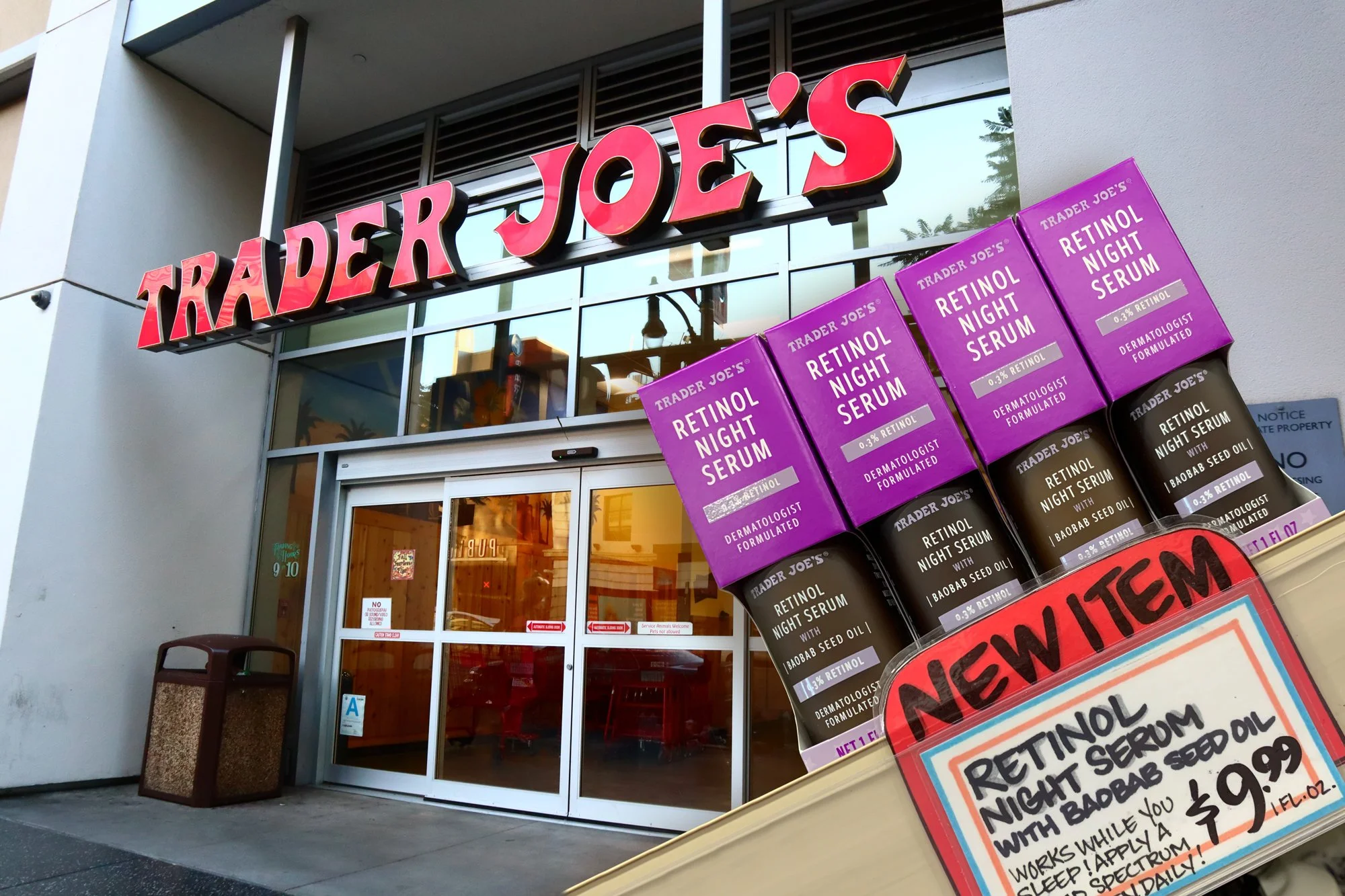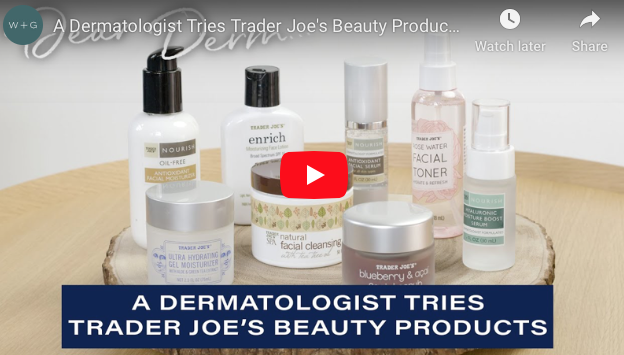TJ’s Ups Their Skin Care Game - Retinol Introduced at Trader Joe’s
Moisturizers, lotions, and serums have popped up at Trader Joe’s over the last few years. A few have even made it onto my favorites list — I’m looking at you Ultra Hydrating Gel Moisturizer and All-in-One Facial Cleanser. But retinol? R-E-T-I-N-O-L. Retinol is no joke. When I heard that Trader Joe’s is sporting their own formula in the form of Trader Joe’s Retinol Night Serum with Baobab Seed Oil, I couldn’t pass it by.
Retinol is to wrinkles (and acne) what Aloe Vera is to sunburn . . . that is to say, it takes care of it/them. First, if you haven’t heard about retinol, I’ve got the lowdown on this impressive (and powerful) form of vitamin A. Once you know that, you’ll understand why I’m so excited that Trader Joe’s has come out with their (highly affordable) night serum.
What is a retinoid, retinol, and Retin-A?
There’s a lot of info floating around about retinol, but it’s easy to get it confused with retinoid and Retin-A. If you’re going to put this stuff on your face (and you’ll want to), you need to understand the difference. They’re related variations, but the terms refer to slightly different things.
Retinoid: The term “retinoid” usually refers to vitamin A and its metabolites, a broad category of vitamin A that includes retinol and Retin-A. Most skincare products powerful enough to have an actual “retinoid” label on them are doctor-prescribed skin treatments.
Retinol: The term “retinol” (the one I’m loving right now) describes the over-the-counter (OTC) form of a retinoid. It’s used to treat both wrinkles and acne. (Most formulas are designed for one or the other.)
Retin-A: Retin-A is the name of the first prescription retinoid product used to treat acne. It’s also called tretinoin and requires a doctor’s prescription.
How does retinol work?
Here’s a little skin 411 to give you an idea of what retinol can do for you. As you age, the skin loses its elasticity and slows down the rate at which it regenerates skin cells. After a while, it can’t replace cells fast enough to keep up with the daily damage (or natural aging process), nor can it bounce back into shape after a good night’s rest. The result — visible lines and wrinkles.
Retinol applied to the skin increases blood flow (improving healing and giving you a youthful glow), skin cell production rate (hello, fewer wrinkles), and stimulates collagen to improve elasticity (and decrease wrinkles in the process).
What conditions can retinol treat?
Trader Joe’s Retinol Night Serum can give skin a boost beyond wrinkles, though I’m partial to the wrinkle help myself.
Wrinkles: Retinol gives your skin cells a bit of a shock treatment to whip them back into shape. It increases cell production, revealing new, youthful skin. At the same time, it stimulates collagen production to plump your skin and rejuvenate elasticity.
Acne: The same increase in cell production that improves wrinkles can also unclog pores. Consequently, retinol makes a frequent appearance in acne treatments.
Hyperpigmentation: Sunspots, liver spots, whatever you call them, hyperpigmentation is when there’s more pigment in one area of the skin than another. Sometimes they’re a result of sun damage or hormones, while some people just have more hyperpigmentation than others. Retinol can help even skin tone as it stimulates cell production and blood flow.
Retinol Side Effects
OTC means minimum side effects, right? Sorry, no. When I say retinol is powerful, I mean even in the OTC form. You might notice side effects like:
Peeling and irritation: The increase in cell production can sometimes cause peeling as your skin adjusts to the retinol.
Dry patches: As retinol stimulates the skin, it can make the skin feel tight and dry or flaky.
Sun sensitivity: Retinol can increase your skin’s sensitivity to the sun, making it more prone to sunburn.
How to use retinol
Retinol can work wonders on your skin, but you have to use it carefully and correctly to avoid side effects and protect your skin from sun damage. I started using the Trader Joe’s formula, and I have to tell you — you have to follow the directions. Start by using twice a week and slowly work your way up to daily use. Here’s how and why you have to use retinol correctly.
Gradually add retinol to your skincare routine. You’re less likely to have side effects if you give your skin time to adjust to retinol’s effects. Try using it once a day every other day for a couple of weeks before jumping to everyday application.
Moisturize right after. After your retinol treatment dries, use a moisturizer to reduce dry, flaky skin.
Wear sunscreen. ALWAYS wear sunscreen. Your skin is more susceptible to damage when you’re using retinol. Apply an SPF 30 sunscreen or higher as the last step of your morning skincare routine to protect yourself. Don’t forget to reapply throughout the day.
Is Trader Joe’s Retinol worth it?
Yes! It takes a little time, like a few weeks, but a consistent retinol treatment can minimize wrinkles. I’ve noticed it helping my smile wrinkles and the dreaded forehead wrinkles. When my daughter was five, she told me my forehead looked like a peanut butter cookie so I’m glad to have something to smooth those out.
This TJ version is powerful and affordable. Follow the directions because it feels tingly at first as your skin gets used to it. I had a little dryness in the first couple of weeks, but I followed the retinol up with TJ’s Ultra Hydrating Gel Moisturizer to cool the tingle.
The Retinol Night Serum is right up there with the quality of the rest of the Trader Joe’s skincare line. In short, I love it.






